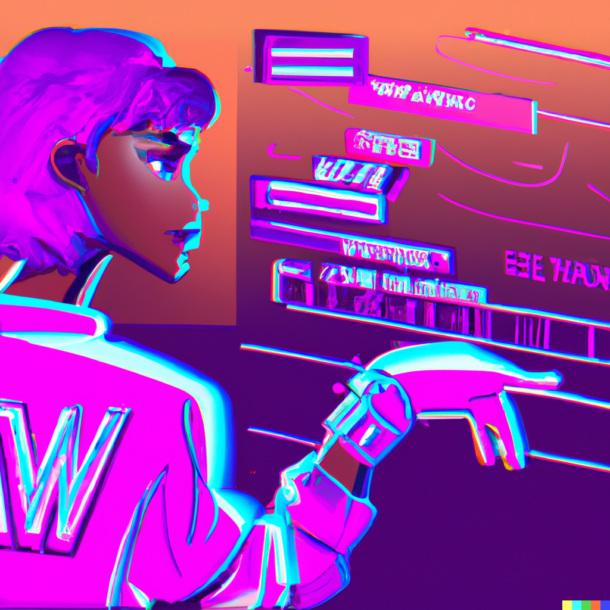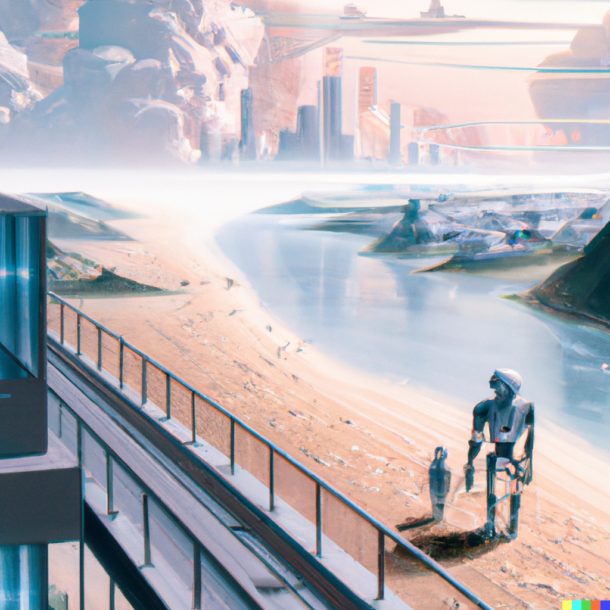When we asked Anwyn Hocking to write about this year’s theme for International Women’s Day, Cracking the code: Innovation for a gender equal future, she decided to investigate and challenge the biases of the ChatGPT platform. It was a fascinating experiment.


Most of what we do as students, designers, architects, researchers and built environment professionals is facilitated by digital technologies. A fact that gives pause when we consider that globally there are 250 million less women online than men. How would your experience differ with no access to digital technologies?
For one, you wouldn’t be reading this article.
This year’s UN Women Australia’s International Women’s Day (IWD) theme, Cracking the code: Innovation for a gender equal future, seeks to raise awareness around such gendered digital inequality to “leverage inclusive technologies, embrace disruptive innovation and ensure access to education”. Through this they hope to also highlight the importance of protecting the rights of women and girls in digital spaces and address digitally facilitated gender-based violence. As part of this, UN Women Australia seek to champion the unique skills and knowledge of women in science, technology, mathematics and engineering (STEM) to foster inclusive shared digital futures.
One possible future comes into view when playing with OpenAI’s recently released ChatGPT. On one particularly lazy afternoon, I ask ChatGPT to write me an article about IWD. It begins:
“The theme of International Women’s Day 2023 is a reminder that we all have a role to play in creating a more gender-equal world. Whether it’s challenging gender stereotypes, advocating for women’s rights, or supporting women in leadership positions, there are many ways to get involved.”
Indeed, women are underrepresented in leadership positions, particularly in AI development. A quick google reveals that women make up only 22% of AI workers globally. Among OpenAI’s fourteen or so founding members and advisors – all world-class research engineers and scientists – two were women, Pamela Vagata and Vicki Cheung.
As our world changes with the introduction of more AI technologies, the origins of these technologies and their data sources will have unforetold impacts. I ask ChatGPT how it might be different if more women and gender-diverse people had worked on its development. In under 10 seconds, it declares:
“If more women and gender-diverse people were involved in my creation, it’s possible that my development would have been shaped by a more diverse set of perspectives and experiences. This could have led to improvements in the accuracy and inclusivity of my responses, as well as a greater emphasis on issues related to gender and diversity. For example, my creators might have been more attuned to the language and cultural nuances of underrepresented groups, leading to a greater diversity of topics and perspectives in my knowledge base. Additionally, a more diverse team of creators might have brought a wider range of technical expertise and problem-solving skills to the development process, leading to more innovative and effective solutions. Overall, increased diversity in the development of AI systems is important for ensuring that these technologies reflect the needs and experiences of a wide range of people and can be used for the benefit of all.”
Although here at Parlour we focus on built environment professions, it’s these diverse “sets of perspectives and experiences” that we wish to make space for, both physically and digitally. While ChatGPT is not currently connected to the internet, major search engines are all developing similar chat bot interfaces to interact with the web. When considering this, the importance of sharing, maintaining and archiving varied perspectives and underrepresented voices online is reaffirmed.
So, this IWD, honour our privilege in having access to digital worlds. Be digitally noisy. Make content for content’s sake – because it’s uniquely yours. Because one day AI and robots may be drawing on information from digital spaces and we need more voices to be heard for, as ChatGPT says, “the benefit of all”.
Need some ideas of where to get started?
- Learn from diverse perspectives through Parlour’s wide range of online resources.
- Add your profile to Marion’s List, our public register of women and gender diverse professionals active in architecture and the built environment. And, better yet, host a writing workshop with some colleagues and friends!
- Have a particular idea you would like to share with the Parlour community? Get in touch with us at hello@parlour.org.au to discuss contributions to the Parlour website or guest host Parlour Instagram.
- Contribute to Wikipedia to assist with the ongoing work of including more women and gender-diverse people to the database.
- Support Parlour to continue archiving varied online perspectives across the built environment professions.
- Explore the UN Women IWD program and donation options to help close the digital gender gap.
Anwyn Hocking is an urban researcher and designer, currently living and working in Melbourne. She is a Teaching Associate at Monash Art, Design and Architecture and collaborator with Parlour. Anwyn holds a Bachelor of Environments (Architecture) from the University of Melbourne and an MPhil in Architecture and Urban Studies from the University of Cambridge.
* The terms woman/women are used as inclusive of all women, and by extension girls, including cis-women, trans-women and intersex women.




















